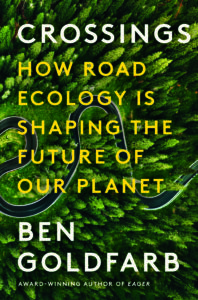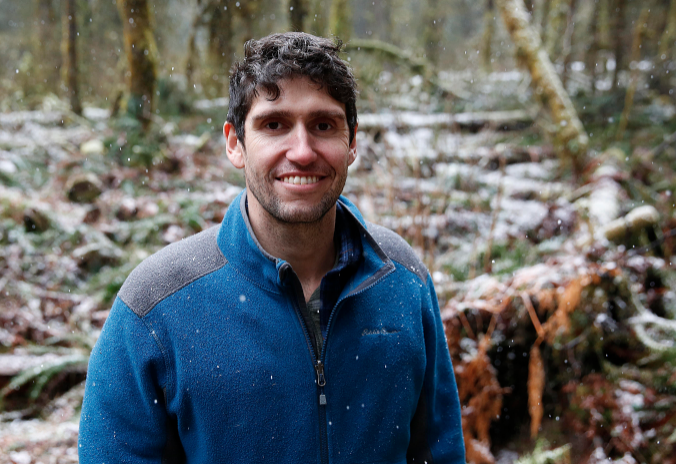 Back in 2013, conservation journalist Ben Goldfarb toured the Highway 93 wildlife crossings on the Flathead Reservation with crossings expert Marcel Huijser, Center road ecologist Kylie Paul, and others.
Back in 2013, conservation journalist Ben Goldfarb toured the Highway 93 wildlife crossings on the Flathead Reservation with crossings expert Marcel Huijser, Center road ecologist Kylie Paul, and others.
“As the sun set, we climbed atop an overpass and watched traffic flow beneath us, a powerful experience that both inspired and fascinated me. We do so much on this planet to make animals’ lives harder and more dangerous, often with our roads — yet here was this multimillion dollar piece of infrastructure, built thanks to the leadership and support of the Confederated Salish and Kootenai Tribes, that humans had created to make things easier and safer for wildlife. What could be more beautiful than that?”
Little did he know that that day in Montana would send him on a journey to learn more about this world of wildlife crossings, culminating in his literary feat, CROSSINGS: How Road Ecology Is Shaping The Future of Our Planet. Roads are an omnipresent form of travel, but most humans neglect to recognize them as an obstruction to nature’s natural processes as they bisect habitats and fragment landscapes.
But some are paying attention, and a few are dedicating their life’s work to understanding and dissecting the relationship between infrastructure and nature. One such individual is Ben Goldfarb, who examines the destructive effects of the 40 million miles of roadways that crisscross the earth and uproot ecosystems that took eons to establish. Listed as one of the best books of 2023 by the New York Times, the New Yorker, and the Smithsonian, CROSSINGS paints a broad brush stroke upon this pervasive issue that harms wildlife populations and ultimately, us.
Ben conducted an impressive amount and array of research for the book, including riding a bike slowly through Montana’s Bitterroot Valley, logging dead deer and other animals for a citizen-science project. He says he was thrilled to learn about the worldwide diversity of wildlife crossings, describing in the book many examples from several continents, and discovering that the movement to reconnect habitats is truly global. “The U.S. is undoubtedly a road ecology leader, but it has plenty to learn from other nations, too,” says Goldfarb.
Lucky for Western Montana folks, Goldfarb is embarking on a six-stop book tour within the state in June 2024 to spread awareness of this pressing issue. Each event will include a reading and a Q&A with Ben and experts from the Center for Large Landscape Conservation and partners. The Center, along with Yellowstone Safe Passages and Glacier-Two Medicine Alliance, is proud to sponsor Goldfarb’s Montana pilgrimage.
Ecological connectivity, the degree to which a landscape facilitates or restricts organisms’ movement or exchange, is gaining traction within the collective consciousness and government policies as an important tool for counteracting climate change, protecting wildlife, and bolstering our ecosystems. Within the U.S., there is a growing momentum for wildlife crossings, a tool for increasing connectivity while improving road safety, with the Federal Highway Administration’s Wildlife Crossings Pilot Program and state-specific legislation that provides funding mechanisms for such types of infrastructure. As it stands today, Montana is poised for potential wildlife crossings on U.S. Highway 191 and an initiative to increase wildlife and motorist safety on U.S. Highway 89, just outside Yellowstone National Park.
When asked what he hopes people will take away from reading CROSSINGS, Goldfarb replies:
“I hope this book helps people realize just how much we can all do to help wildlife. We can change our own driving habits, for example by driving more slowly and carefully, and less frequently at night. We can become volunteer road ecologists ourselves, by helping to collect the roadkill data that informs future wildlife crossings. And, most importantly, we can publicly support infrastructural fixes like wildlife crossings and fencing, and encourage our elected officials and agencies to build more of them. In a sense, we all contribute to conflicts between roads and wildlife — I’ve hit animals myself. But we’re all part of the solution, too.”
See the locations and dates listed here to attend one of Ben Goldfarb’s highly anticipated readings and get involved!



